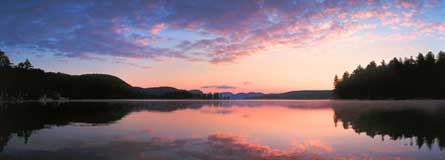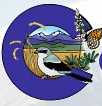Website links

Wildlife Conservationist .com is the premier online directory and environmental resource guide for global wildlife conservation.
A member of the award winning ADIRONDACKS.com network
|
The
Nature Conservancy - The Nature Conservancy's mission is to
'preserve the plants, animals and natural communities that represent the diversity
of life on Earth by protecting the lands and waters they need to survive' (mission
from The Nature Conservancy magazine).
The
Sierra Club -The Sierra Club's members are more than 750,000
of your friends and neighbors. Inspired by nature, we work together to protect
our communities and the planet. The Club is America's oldest, largest and most
influential grassroots environmental organization.
Why
conservation?
Urban historic sites have significant potential for drawing cultural tourism. According to the World Tourism Organization, 70 percent of tourist revenues are spent in cities.
In the 1960s and 70s, the world saw an unprecedented increase in tourist arrivals, particularly in Asia. Tourism has brought many benefits in the form of economic development and international exchange. At the same time, tourism has increased pressure on the environment, on local communities, and on cultural assets.
However, heritage conservation is not incompatible with sustainable tourism development. There must be a well-thought out management plan which covers both tourism development and conservation, which is followed by all. Sustainable culture tourism implies increased investment to maintain and/or invigorate the cultural resources on which the tourism is based. Financing for this needed increased investment in culture can and should be found within the profit margins of the tourism industry. Innovative public-private partnerships can be established to link conservation efforts to sustainable tourism development.
Although an increase in visitors to a site can bring economic benefits the increase in numbers of people is in itself problematic because of the additional stress it places on the already-fragile monuments. There is an upper limit to the number of visitors a historic/cultural site can receive at any one time without the site suffering permanent degradation or damage.
It is both desirable and possible to expand both the carrying capacity of a site and the touristic interest of a site by integrating intangible culture with the physical heritage. Investment in training and human resource development in the performing and other traditional arts is, therefore, good tourist economics. Personnel, drawn from the local community and trained in the in-depth presentation of a cultural site as well as in its maintenance is crucial to the successful development of cultural tourism as a sustainable business.
In
the era of globalization, there has been a resurgence of appreciation and pride
for local traditions. People are coming to realize that traditional solutions
and methods which have evolved out of particular natural and social environments
may be the best solution to some of the problems at hand. There may be some lessons
learned from the Green Revolution of the 1970s, which led to the adoption of new
farming methods instead of traditional systems, which have led to an increased
dependence on expensive equipment and fertilizer, and have replace the self-sufficient
agrarian lifestyle. from UNESCO Bankok
Steve Irwin Memorial

Visit New York's premier award winning web site showcasing the six millon acre Adirondack Park in Upstate New York! www.Adirondacks.com (image by Carl Heilman)
43 Broadway Saranac Lake, New York 12983 Phone: 518-891-3745 Fax: 518-891-3768 E-Mail: robgrant@northnet.org
| ||||||||
- Alberta's At-Risk Wildlife
- Atlantic Salmon Federation
-
Bull Pages - Rainforest Information
- Colorado Natural Heritage Program
- Conservation Breeding Specialist Group
- Defenders of Wildlife
- Dian Fossey Gorilla Fund
- Ding Darling Wildlife Society
- Earthtrust Wildlife Conservation Worldwide
- East Texas Herpetological Society
- Elephant Consultance
- Friends of the Asian Elephant
- Friends of the Environment
-
Friends of the Sea Otter
- GOB Ornithology and Nature Conservation in the Balearic Islands
- Gorilla Haven
- Greenpeace International
- High North Alliance
- International Aviculturists Society
- International Marine Mammal Association
- International Rhino Foundation
-
Island Nature Trust
- Mahale Wildlife Conservation Society
- Mammal Society
- National Audubon Society
- National Parks and Conservation Association
- National Turtle and Tortoise Society
- National Wildlife Federation
- Native Fish Society
- Natural Resources Defense Council
- Nature Conservancy
- Nature Conservancy of Hawaii
- Naturenet
- Nova Scotia Bird Society
- OCEAN - Organización para la Conservación, Estudio y Análisis de la Naturaleza
- Organization of Biological Field Stations
- Orphaned Wildlife Rehabilitation Society
- Pacific Rivers Council
-
Rachel Carson Council
- Raptor Repertoire
- Safari Club International
- Santa Barbara Wildlife Care Network
- Save our Squirrel Glider Possum
- Save the Manatee Club
- Save the Rhino International
- Saving Berries for the Bears
- Shea Park - Safe Haven for Endangered Animals Exotic Animal Sanctuary
- Sierra Club
- Society for the Study of Amphibians and Reptiles
- SOS Rhino
- South Plains Wildlife Rehabilitation Center, Inc.
- Southeastern Raptor Rehabilitation Center (Auburn University)
- St. Johns County Audubon Society
- Stanley Park Ecology Society (Vancouver, BC)
- Suncoast Seabird Sanctuary
- Teaming With Wildlife
- Tiger Missing Link
- Trout Unlimited Canada
- Turpentine Creek Exotic Wildlife Refuge
- Umweltstiftung WWF-Deutschland
- Union of Concerned Scientists
- University of Minnesota Raptor Center
- Washington Protection Association
- West Virginia Raptor Rehabilitation Center
- Wildlife Conservation Society (Bronx Zoo)
- Wildlife Preservation Trust Canada
- Wildlife Trusts
- Wildlife Waystation
- World of Birds Wildlife Sanctuary (Cape Town, South Africa)
- World Wildlife Fund
- World Wildlife Fund - Canada
- World Wildlife Fund - Hong Kong
- World Wildlife Fund - The Netherlands
- World Wildlife Fund - Switzerland
- World Wildlife Fund - UK
- WWW Virtual Library: Biology Societies and Organizations













 At
the same time, conservation also directly serves economic development goals. It
is a productive activity which creates jobs and economic activity in the local
community. Conserved buildings and structures not only reinforce the character
of the historic town, but they can also be re-used or adapted for different purposes
as housing, schools, health centers, and museums.
At
the same time, conservation also directly serves economic development goals. It
is a productive activity which creates jobs and economic activity in the local
community. Conserved buildings and structures not only reinforce the character
of the historic town, but they can also be re-used or adapted for different purposes
as housing, schools, health centers, and museums.